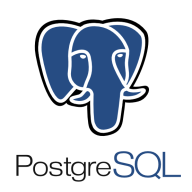

PostgreSQL and Microsoft Azure Cosmos DB are leading contenders in the database market, each with unique offerings. PostgreSQL has an edge in scalability for complex applications, while Cosmos DB's flexibility and cloud-native design cater to diverse use cases and environments.
Features: PostgreSQL supports scalability on write-intensive tasks, asynchronous commit, and is ACID-compliant, offering robust indexing and JSON support. Cosmos DB excels in providing multi-model NoSQL capabilities, global distribution, and seamless integration with other Azure services, benefiting users seeking flexibility and performance.
Room for Improvement: PostgreSQL could enhance handling of read-intensive operations and support multiple storage engines to simplify setup for large datasets. It would benefit from enhanced replication and partitioning support. Cosmos DB's complex pricing and limited multi-collection join support are seen as areas for improvement, and users desire better query capabilities and cost transparency.
Ease of Deployment and Customer Service: PostgreSQL offers versatility with strong on-premises and hybrid presence, backed by a vibrant community but lacks official customer service. Cosmos DB's integration with Azure services simplifies deployment, supported by comprehensive customer services, although users seek more optimization guidance.
Pricing and ROI: PostgreSQL is cost-effective due to its open-source nature and zero licensing fees, maximizing ROI. Conversely, Cosmos DB's subscription-based model incurs higher costs, but its performance and scalability benefits justify the pricing, despite user concerns over cost unpredictability and usage calculation challenges.
| Product | Market Share (%) |
|---|---|
| Microsoft Azure Cosmos DB | 5.0% |
| PostgreSQL | 5.4% |
| Other | 89.6% |


| Company Size | Count |
|---|---|
| Small Business | 31 |
| Midsize Enterprise | 19 |
| Large Enterprise | 55 |
| Company Size | Count |
|---|---|
| Small Business | 58 |
| Midsize Enterprise | 26 |
| Large Enterprise | 45 |
Microsoft Azure Cosmos DB is a globally distributed, multi-model database service providing scalability, user-friendliness, and seamless integration, suitable for managing large volumes of structured and unstructured data across diverse applications.
Azure Cosmos DB is renowned for its scalability, stability, and ease of integration, offering robust support for multiple data models and APIs. Its capacity for handling unstructured data efficiently and providing real-time analytics makes it ideal for applications requiring high performance and global distribution. With features like automatic failover and integration with Microsoft products, users benefit from cost optimization and secure data handling. Enhancement opportunities include simplifying queries, improving documentation, and expanding backup and analytics functionalities.
What are the most important features of Microsoft Azure Cosmos DB?Azure Cosmos DB is frequently used in sectors like web, mobile, IoT, and analytics. It supports applications as a key-value store, processes real-time data, and enables global scalability with low-latency access. Its big data management capabilities and integration with Azure services enhance its utility across industries.
PostgreSQL is a versatile and reliable database management system commonly used for web development, data analysis, and building scalable databases.
It offers advanced features like indexing, replication, and transaction management. Users appreciate its flexibility, performance, and ability to handle large amounts of data efficiently. Its robustness, scalability, and support for complex queries make it highly valuable.
Additionally, PostgreSQL's extensibility, flexibility, community support, and frequent updates contribute to its ongoing improvement and stability.
We monitor all Vector Databases reviews to prevent fraudulent reviews and keep review quality high. We do not post reviews by company employees or direct competitors. We validate each review for authenticity via cross-reference with LinkedIn, and personal follow-up with the reviewer when necessary.